creating an autumn altar
designing with nature, intention, and ritual
One of the ways I flex my creativity throughout the year is by building seasonal altars. They can be as simple as a few treasures tucked onto a bookshelf or as elaborate as an entire tabletop layered with dozens of elements. What I love most is that an altar is never just decoration—it’s atmosphere. A seasonal altar weaves together three of my favorite things: design, nature, and tokens of the season. When arranged with intention, these items become more than objects. Together, they create mood. They pull us into rhythm with the cycles of the earth, the turning of the year.
Sometimes an altar is purely aesthetic—a vignette of beauty that sparks joy when you pass it. Other times it becomes wholly immersive: a place where you pause, light a candle, journal, meditate, set intentions, or cast spells. There are no rules here, no “right way.” You are creating something for your pleasure, your reverence, your connection. Still, there are tips and guidelines that help the process feel fluid rather than overwhelming. Here’s my guide for designing an autumn altar—step by step.
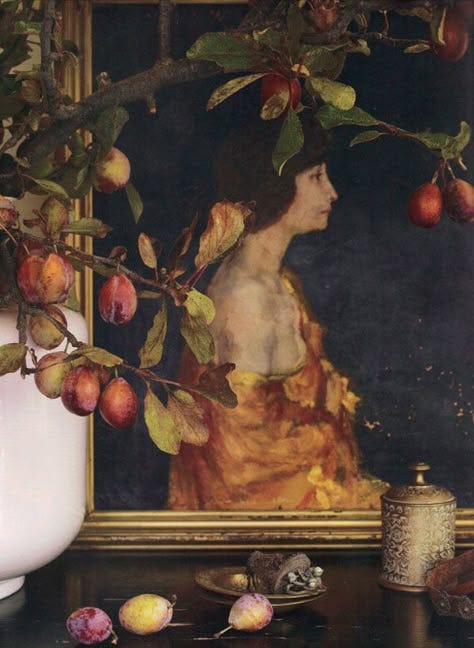
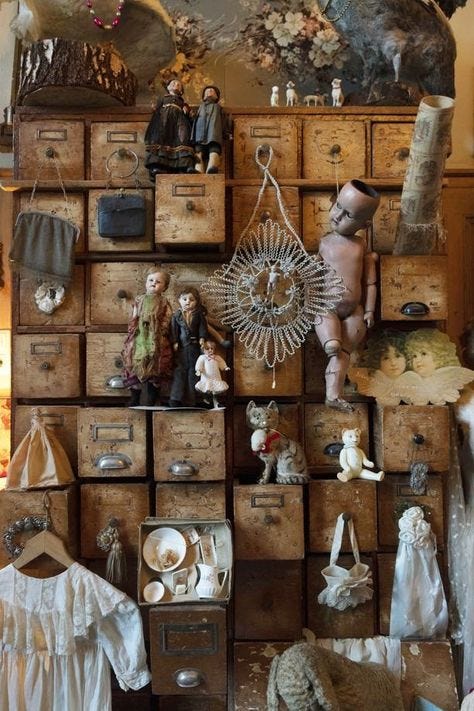
Step 1: Choose the Location
Start by deciding where your altar will live. The size of the space will shape how many elements you gather. A small altar—on a nightstand, a narrow shelf, or the corner of a desk—might only need a few meaningful pieces. A larger altar—on a credenza, dresser, or dining table—can handle more layers and drama.
Place your altar somewhere you’ll actually see it: a cozy corner, the heart of your living room, the spot you linger with morning coffee. It should invite your attention, not compete with it.
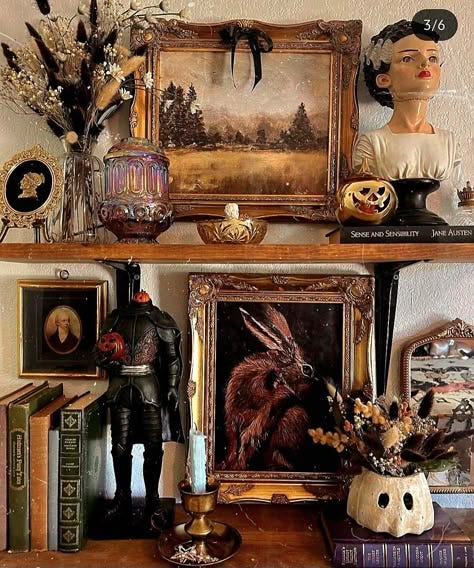
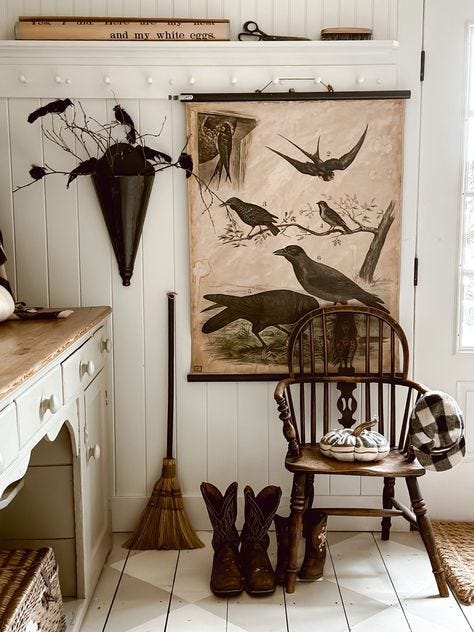
Step 2: Gather the Elements
I like to work from lists. First, I create a list of “evergreen” altar pieces—items that aren’t tied to a season but form the foundation of every arrangement. These are your building blocks: candleholders, trays, vessels, cloths, mirrors, pedestals, little bowls, books, and stands.
Next, I make a list of seasonal items—in this case, all things autumn. Think gourds, fallen leaves, acorns, dried flowers, pumpkins, seasonal fruits, branches, autumn herbs, rich fabrics, and earthy tones.
Once I have my lists, I wander my home slowly and gather. I pull from shelves, cabinets, and drawers—pilfering from other rooms, stacking everything in one place so I can see my palette. This part always feels like treasure hunting.

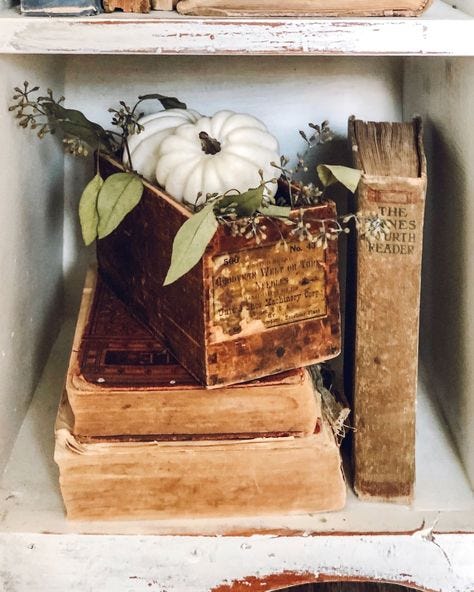
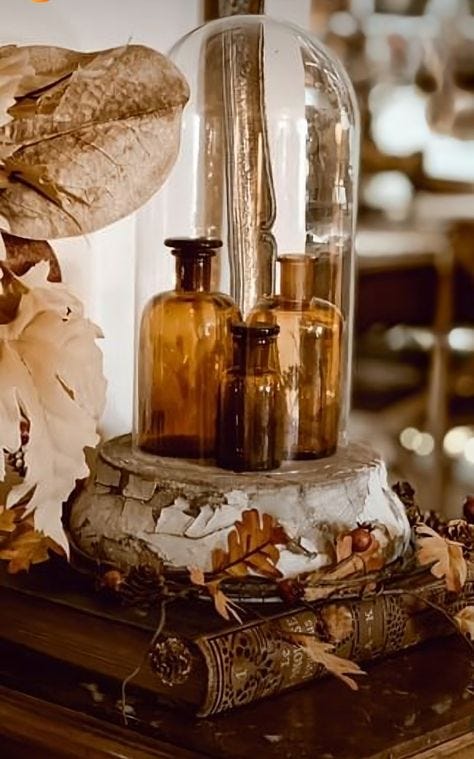

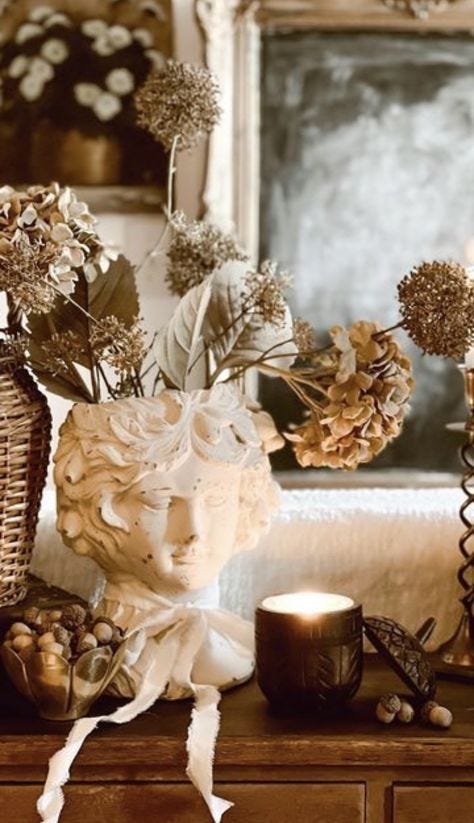

Step 3: Clear and Set the Base
Before arranging, clear the surface completely. You need a blank slate. Then begin with your foundational pieces—the ones that will establish height, depth, and shape. Think stacks of leather-bound books, a tiered stand, a cake pedestal, or a small trellis. These aren’t the stars but the scaffolding, the quiet structure that will hold your display.

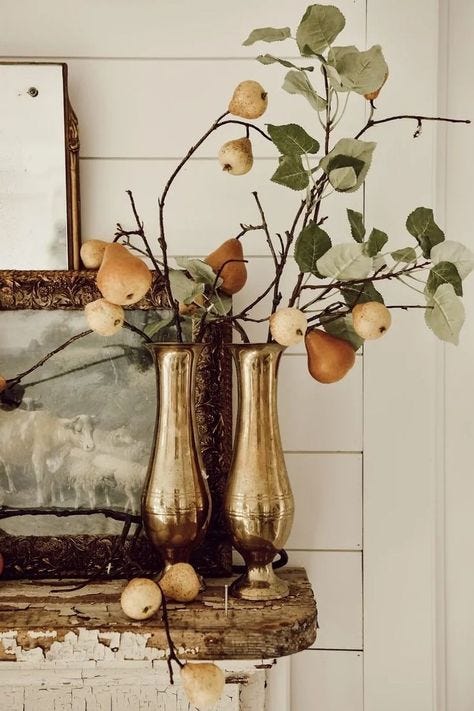
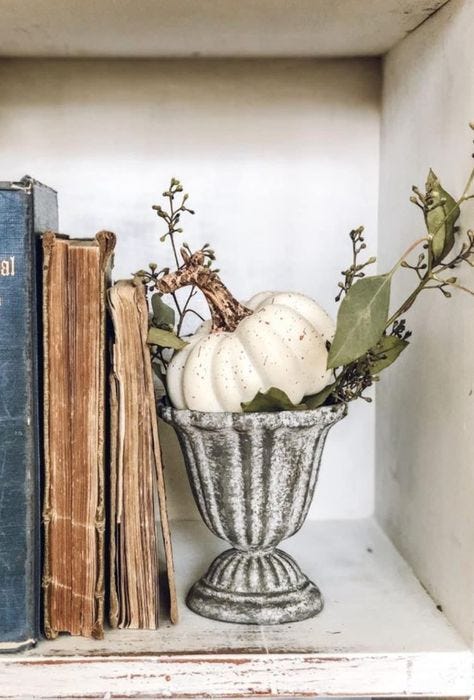
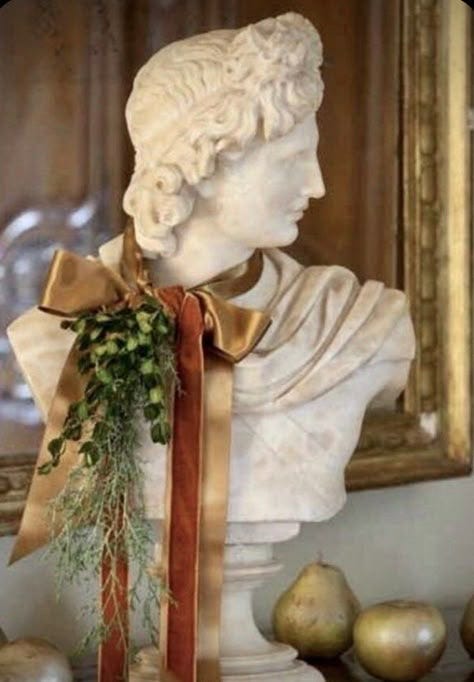
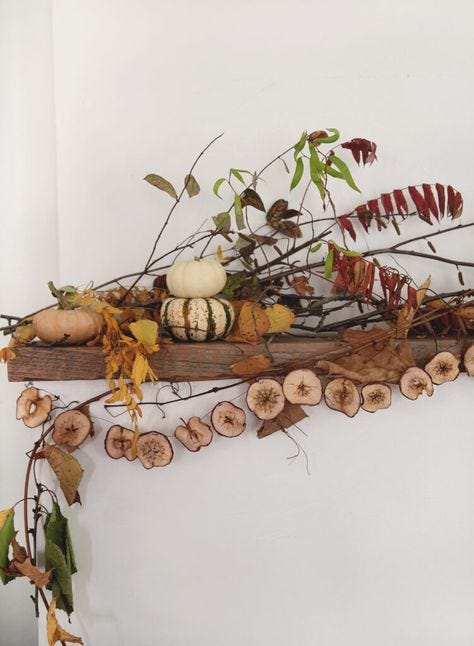

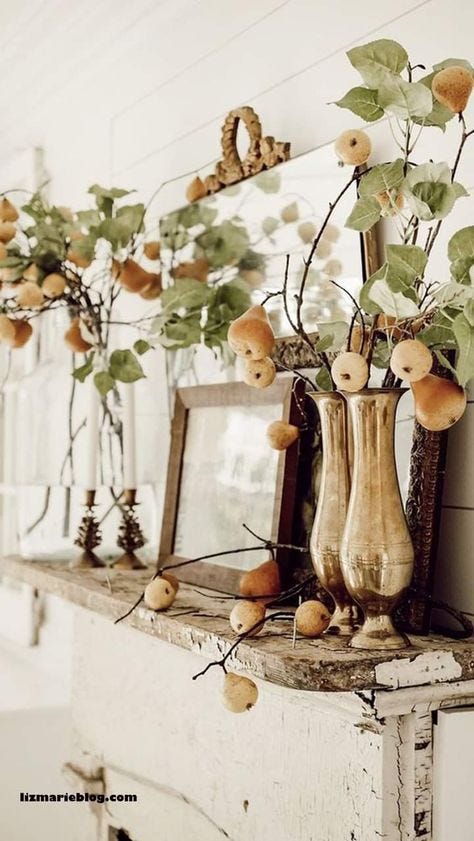
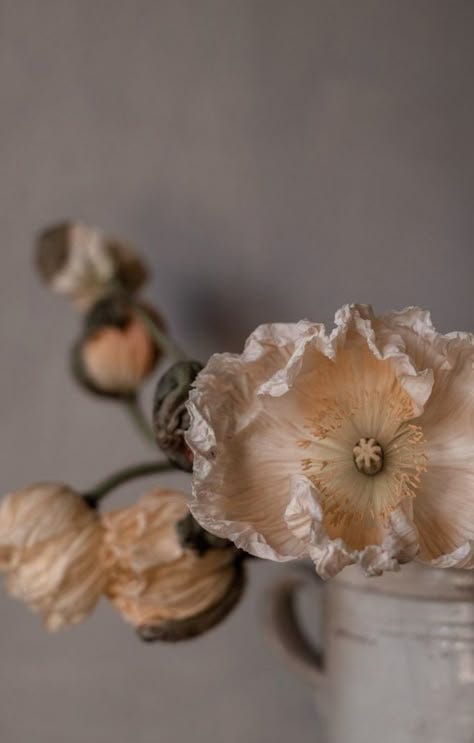
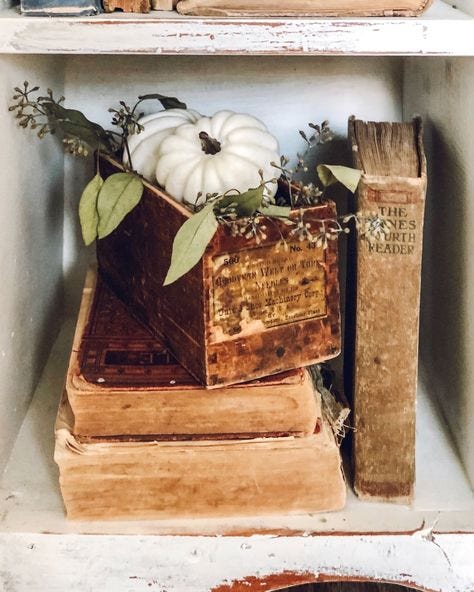
Step 4: Layer the Seasonal Magic
Now comes the fun part. Begin placing your autumnal items, layering them in ways that create visual interest:
Mix textures: smooth beside rough, soft beside hard.
Play with shapes: something flowing over something square, something organic against something geometric.
Vary height: a tall candle next to a low bowl, a stack of books beneath a pumpkin.
A golden rule of composition: group objects in odd numbers. Threes and fives are pleasing to the eye in a way that pairs rarely are. Create little pockets of beauty that, together, form a larger whole.
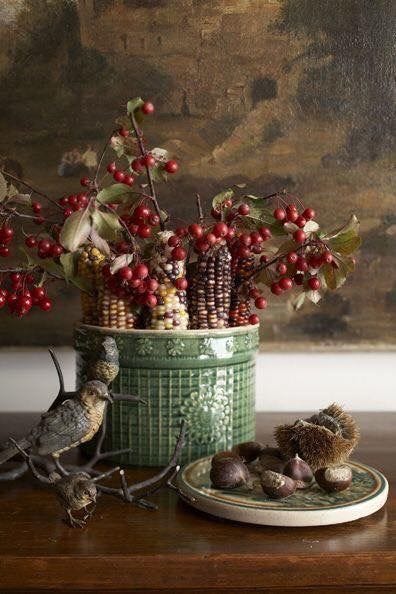
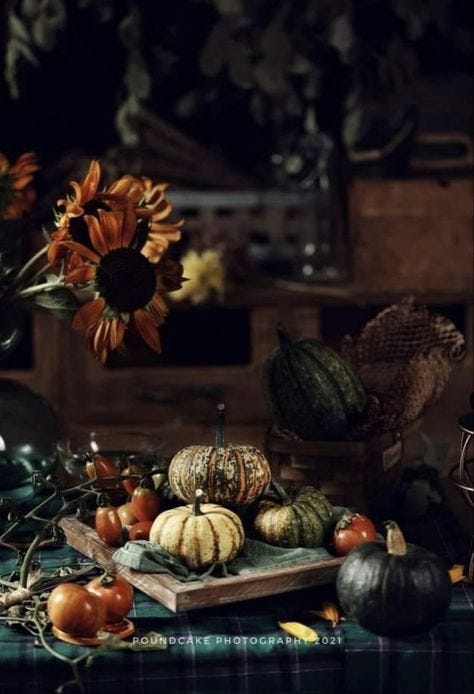
Step 5: Step Back and Refine
Pause often and look at the whole. Step back, then step closer. Move things slightly forward or back. Add a stand under one object to lift it higher. Remove an element that feels distracting. Let this be play.
This is usually the longest part of the process, so don’t rush. If frustration creeps in, walk away. Sometimes my altars sit half-finished for a day or two until inspiration strikes. That pause is part of the ritual—it allows your altar to breathe into being rather than forcing it.
This is also the moment to notice what might be missing. Maybe you want to add fresh flowers, a small gourd, a sprig of rosemary, or a little brass trinket. Give yourself permission to source slowly.
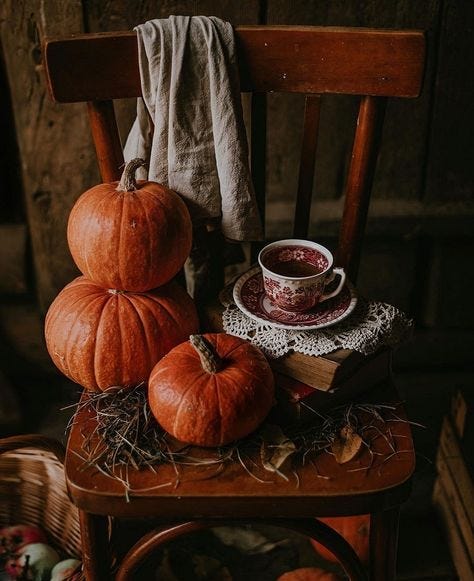
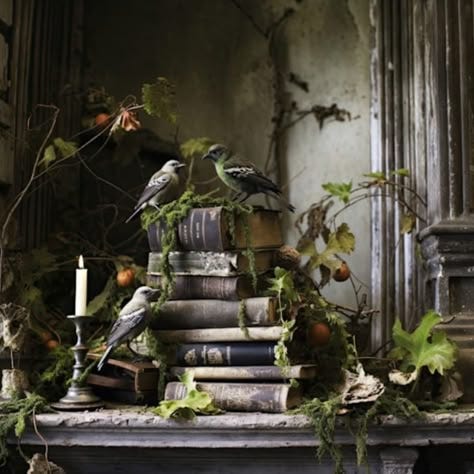
Step 6: Light It Up
The final touch: illumination. Add candles, twinkle lights, or a lantern. Once you’ve lit the altar, you’ll see how everything comes alive in the glow. Snap some photos, admire your work, and—most importantly—let it shift you into the season.
This isn’t a static display; it’s a living, breathing arrangement. Touch it often. Replace flowers, burn the candles, swap elements in and out. Let it change as the season unfolds, because you are changing too.
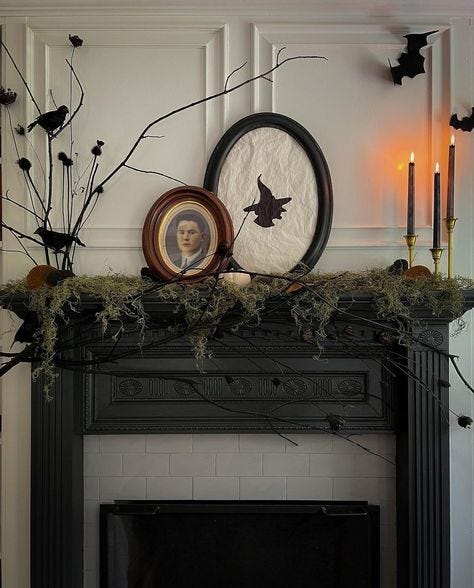
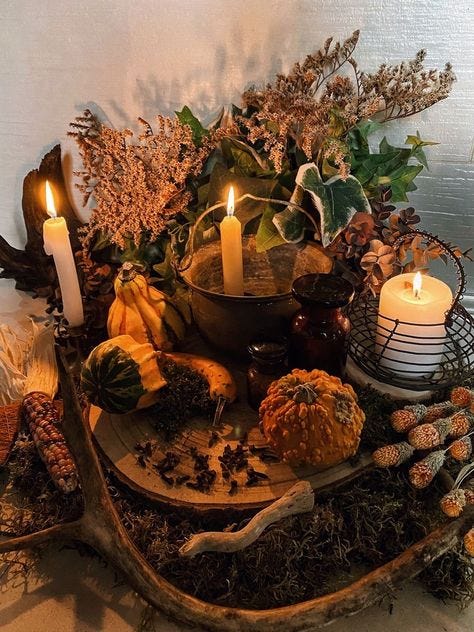
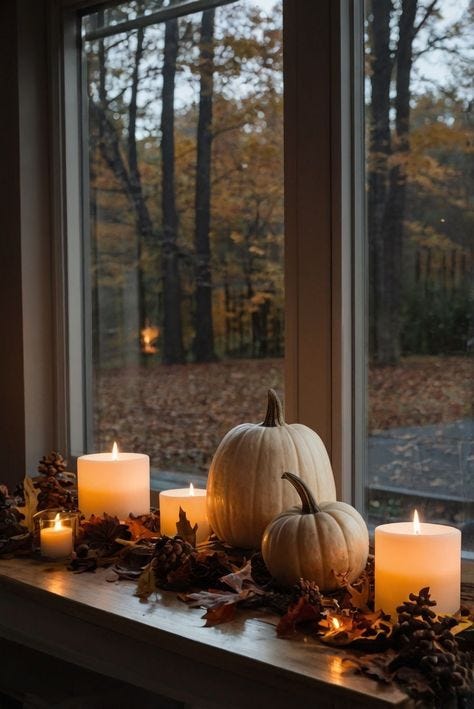


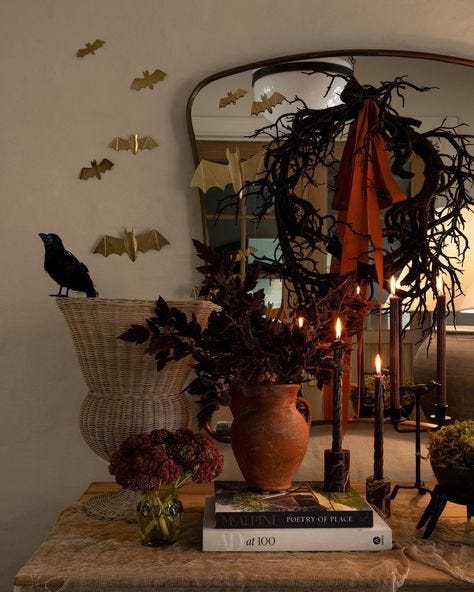
An altar is never just an arrangement of pretty things. It is a reminder to pause, to notice, to be in rhythm with the season rather than watching it slip past. Each time I light a candle or rearrange a leaf, I am reminded that beauty is not something separate from daily life—it is woven into it, waiting to be honored. Your altar can be a quiet companion, a seasonal heartbeat inside your home. Let it hold you in the deepening days of autumn, remind you of the cycles you belong to, and call you back to presence each time you pass by.

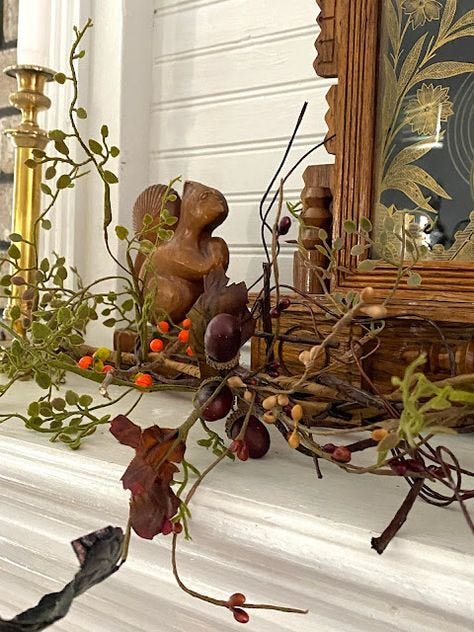
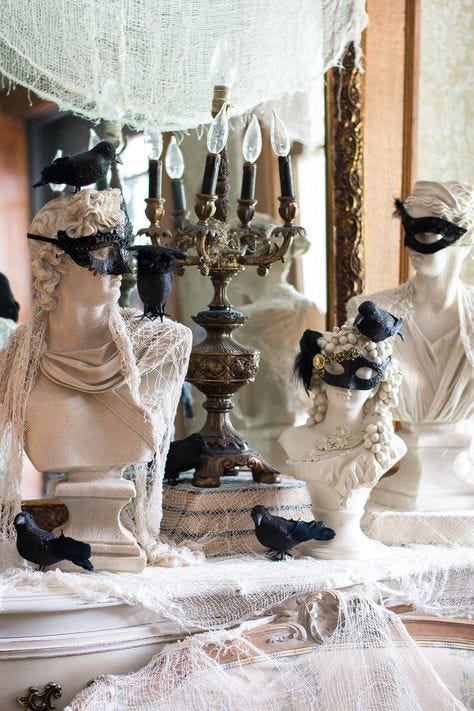
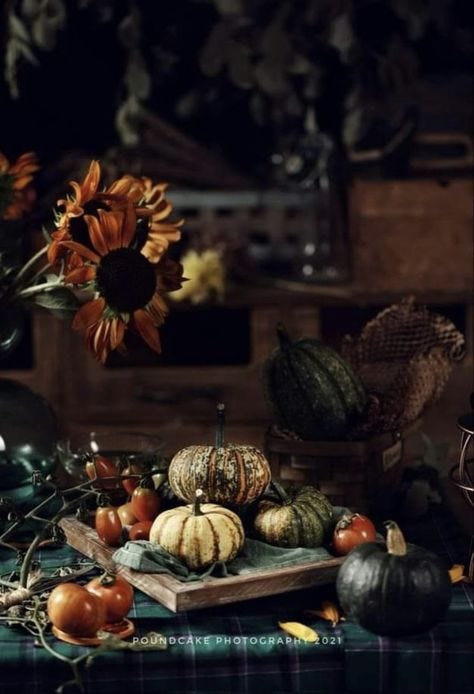
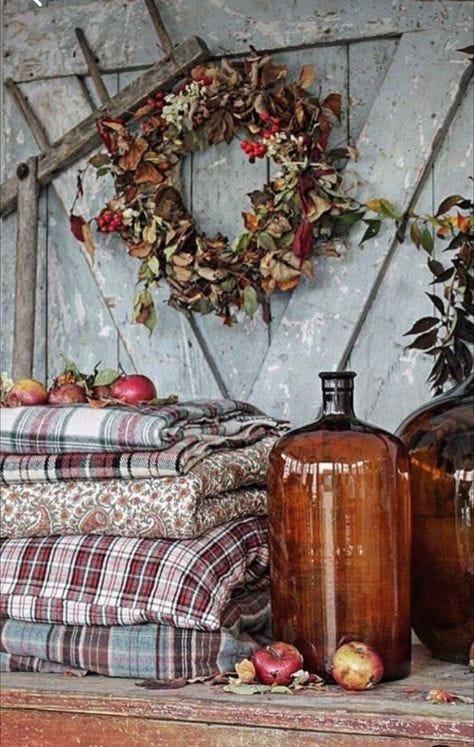
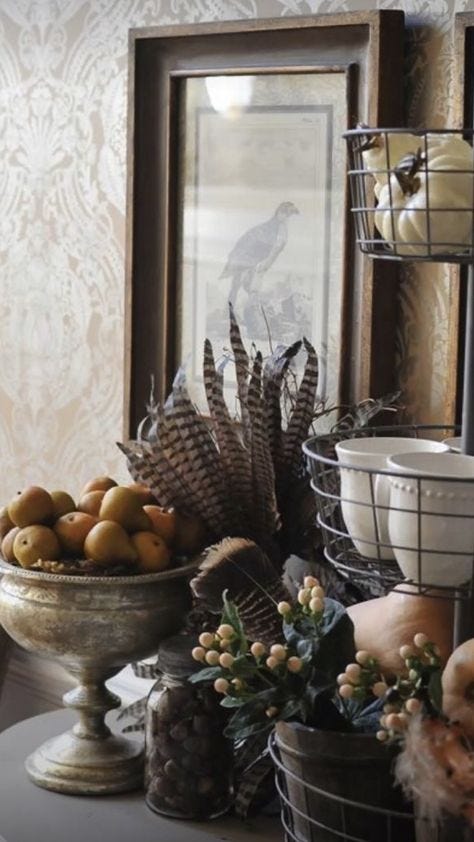
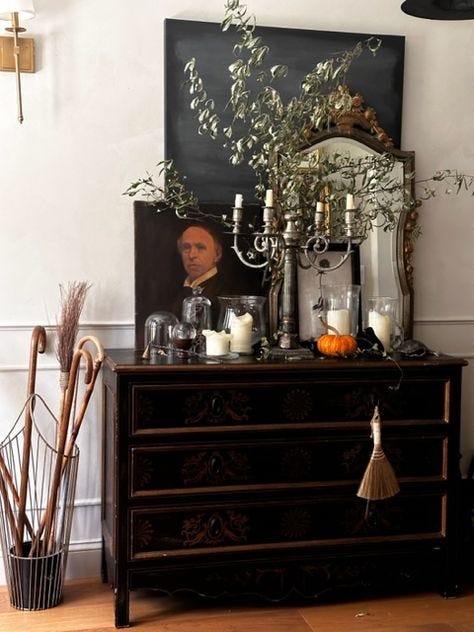
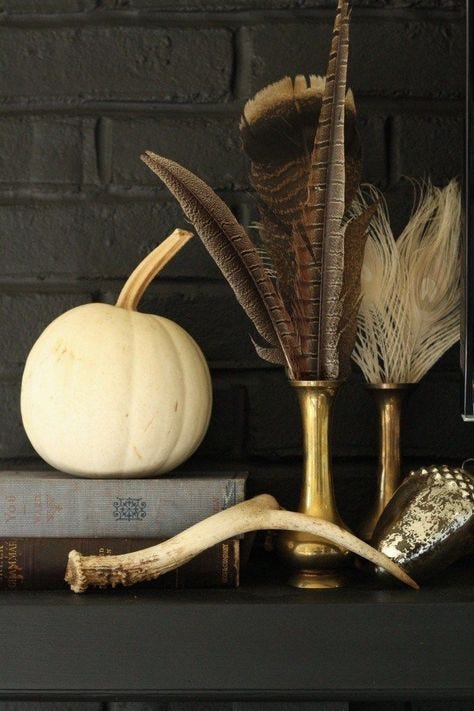
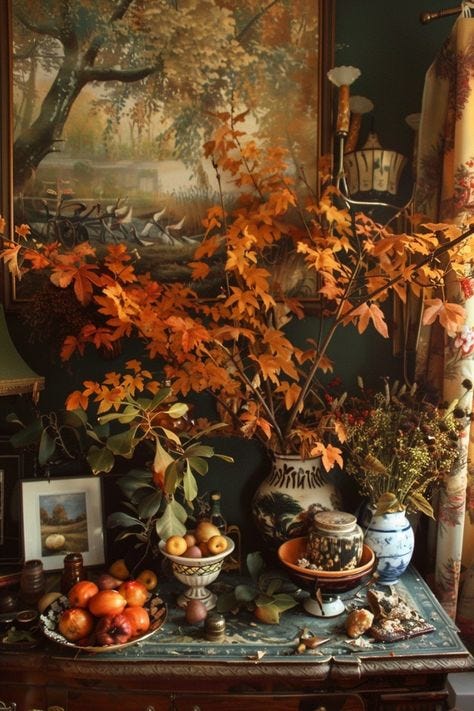


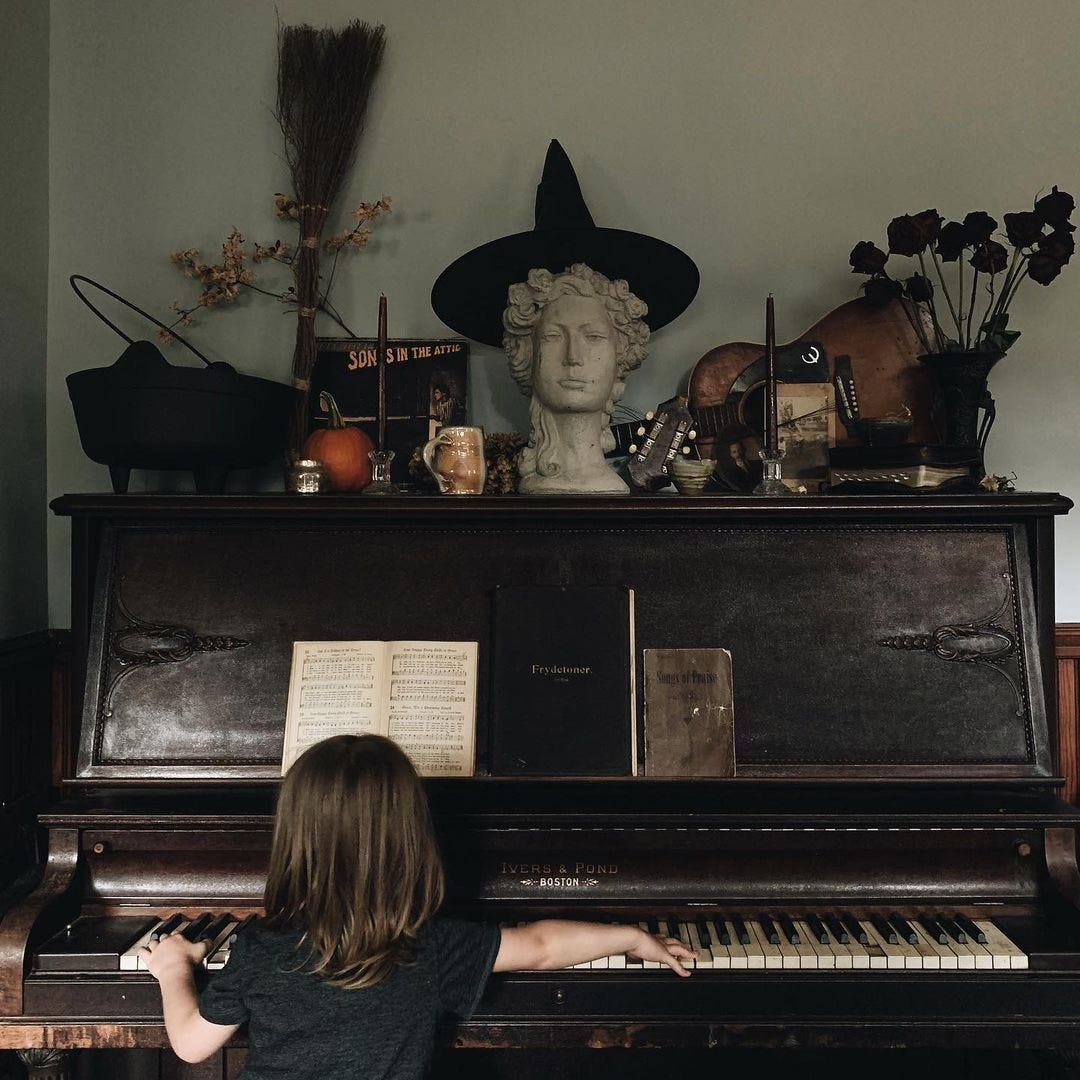


Pretty cool Kelley, i always learn to look at things differently when I read your post, I appreciate it, thank you